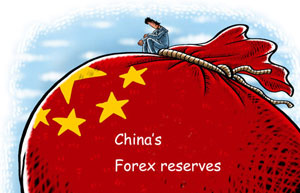Yokohama, in Japan, is another city that has turned challenges into opportunities. Specially mentioned this year, the city on the outskirts of the Tokyo metropolitan area has a revitalized waterfront and had managed to cut the amount of waste it produces by 43 percent between 2001 and 2010.
All these cities are often picture perfect - idyllic combinations of natural attributes and impressive architecture that facilitate living, rather than getting in its way.
Many cities in Asia, from Hong Kong to Manila and even the impressive Shanghai, too often feel like agglomerations of buildings built by developers whenever there is space.
In China, for example, the common approach to redevelopment has been to find a spot of land to build a new CBD and make it easy for developers to just go ahead and build, says Joe Zhou, head of research for East China at Jones Lang LaSalle, a real estate management company. Suzhou's approach has been different. Unlike most cities in China, the plan that has guided the development of the city has been in place for more than two decades.
This is difficult to do in China, for a couple of reasons.
One is that the country is managed through five-year plans, which makes longer range planning difficult for lower level authorities that may see priorities change.
Another is that economic and population growth in most of the larger cities in China has generally been too fast to make any type of long-range planning easy.
What Suzhou has done is reverse current practice and focus on building a city that can be enjoyed on foot. There are parks within walking distance of most residential areas and there are community shopping clusters also in walking distance.
"This is quite uncommon in China but it is quite common in Singapore. They copied that from Singapore," says Zhou.
This helps create a more livable city on many levels.
From an aesthetic point of view, green and open spaces are always a plus when compared to the crowded urban spaces of Shanghai, Beijing or Hong Kong.
From a practical standpoint, residents benefit as well. They can walk out of their apartment and head to a park for a stroll or some exercise. Or they can walk to a small and accessible shopping strip that focuses on their day-to-day needs more than it does on the need to stock Louis Vuitton purses or Montblanc pens.
Environmentally, the design of the city also helps because it does not promote driving. Fewer cars are, at least as far as the environment is concerned, never a bad thing.
Most cities in China have traditionally focused on big development plans driven by the real estate developers themselves. These developers have tended to find a large parcel of land in a suburban area somewhere, and then build a multi-purpose complex with a few skyscrapers for residences, a big mall and, somewhere, a park of some kind to meet urban planning guidelines.
But Suzhou does not have much access to suburban lands. It is surrounded by other cities and by lakes and rivers. The land it has at present is all that it will ever be able to use. So the city government has had to work with that. And it made peace with this reality a long time ago, planned around it and stuck with the original plan.
"I would emphasize very consistent planning over time," says Zhou.
|
 |
 |
